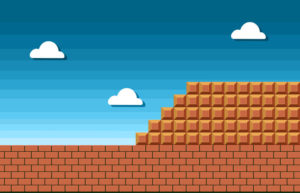
07 Dec 6 Ways Gamification can Supercharge your Sales Training
Gamification has extraordinary potential when it comes to sales training. Gamification is the use of game mechanics to generate engagement, promote learning, and motivate performance. With Millennials gradually taking over the workplace, it’s becoming even more important to make sure salespeople are engaged in the learning process. This is where gamification comes into play.
Gamification has been proven to be extremely effective as a reinforcement mechanism for sales training. But how do you apply it? Here are six ways on how you can leverage gamification as part of your sales training.
1. Incentivize with Rewards
Want to motivate your salespeople? Give them badges, points, or power-ups when they demonstrate competence in a skill area. Rewards are a key aspect of gamification as they can keep salespeople motivated. Rewards also provide your salespeople with recognition for time, effort, and skills attained.
Schedule rewards into the learning experience based upon the completion of certain actions. An example of this is rewarding your new salespeople with the Sales Readiness badge when they close their first major sale without manager or peer support.
2. Create a Sense of Achievement through Gamification
When I first played the Nintendo game Super Mario Bros I loved the satisfaction and sense of achievement I got after completing a challenging level. Why not engineer the learning experience so your salespeople experience these same feelings of mastery?

During sales training, promote a sense of achievement after your salespeople complete a course, receive a badge, or level up. Design certification levels around bronze, silver, and gold level certification. Make each level challenging enough so salespeople experience a strong sense of achievement when attaining it. Take a lesson from the Boy Scouts and how they use badges to promote a strong sense of achievement!
3. Provide Instant Feedback
In video games, players get immediate feedback for their actions:
- If I jump on this piranha plant, then I will lose my life.
- If I obtain 100 coins, then I’ll receive an extra life.
Timely feedback helps steer behavior in the proper direction. Want to increase the effectiveness of your sales training? Then make sure salespeople get timely feedback so they can make the necessary course corrections, when it comes to behavioral changes.
4. Make Learning Fun through a Storyline
During gameplay, players often find themselves immersed in an adventure, a disastrous scenario, or a competitive situation. These situations work well in sales training environments too.

Put your salespeople in simulated situations where they are tested on their ability to demonstrate the application of a skill. Create customer profiles, conflict scenarios, or drop your salespeople into an entire storyline. Not only will this create a strong sense of engagement, but it will also help drive the adoption of new behavior by making learning more fun.
5. Break up Sales Training into Bite-Sized Chunks
How long did it take you to complete level 1-1 in Super Mario Bros? Did it take you 30 minutes? Or was it more like 3 minutes? Video game developers know that players are more likely to stay engaged in a game if the game is broken down into segments. This is why video games consist of missions, worlds, or levels. Similarly, by segmenting sales training content into smaller chunks, salespeople will have a much easier time absorbing it and applying it on the job.
Rather than having a new salesperson focus on the successful execution of an entire stage of the sales process, break the stage up into smaller, manageable portions. For instance:
- First, have the salesperson practice opening the call by delivering the introduction.
- Once proficient at that, have the salesperson open the call AND deliver the positioning statement.
- Next, have the salesperson open the call, deliver the positioning statement, AND ask questions to identify the customer’s needs.
Providing plenty of coaching and support throughout this process helps the salesperson adopt new behaviors.
6. Create a Healthy Sense of Competition
When it comes to gamification, leaderboards can be extremely effective at motivating salespeople. Leaderboards allow salespeople to keep track of their scores and showcase how they are doing in front of their peers. It also provides managers with insight into which salespeople are doing well and which ones require additional coaching and support.
One of our clients successfully implemented a peer coaching approach using leaderboards. They had their salespeople who were at the top of the leaderboard become peer coaches for those towards the bottom. This also helped identify which salespeople had the potential to become future leaders within the sales organization as well.
In Summary
Gamification is a powerful tool to improve your sales training. It can bring rewarding benefits especially when you apply it in the right way.
With gamification, you will have no problem making sales training more engaging and enjoyable. Use it wisely and you’ll see an increase in knowledge retention, skill transfer, and higher sales results.


